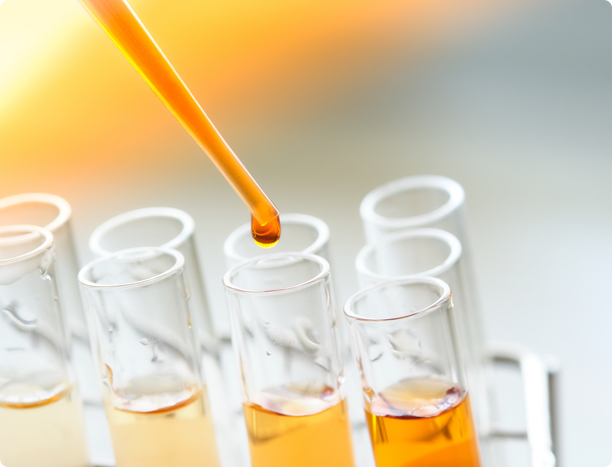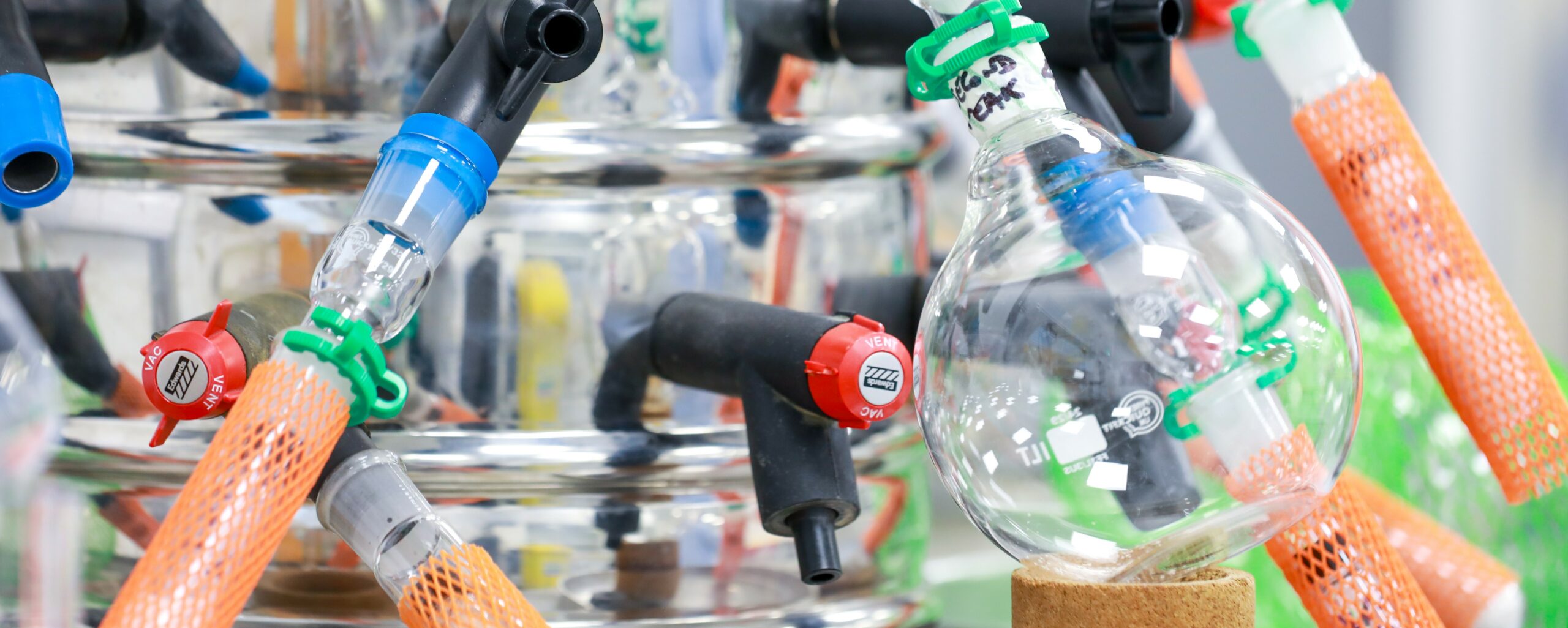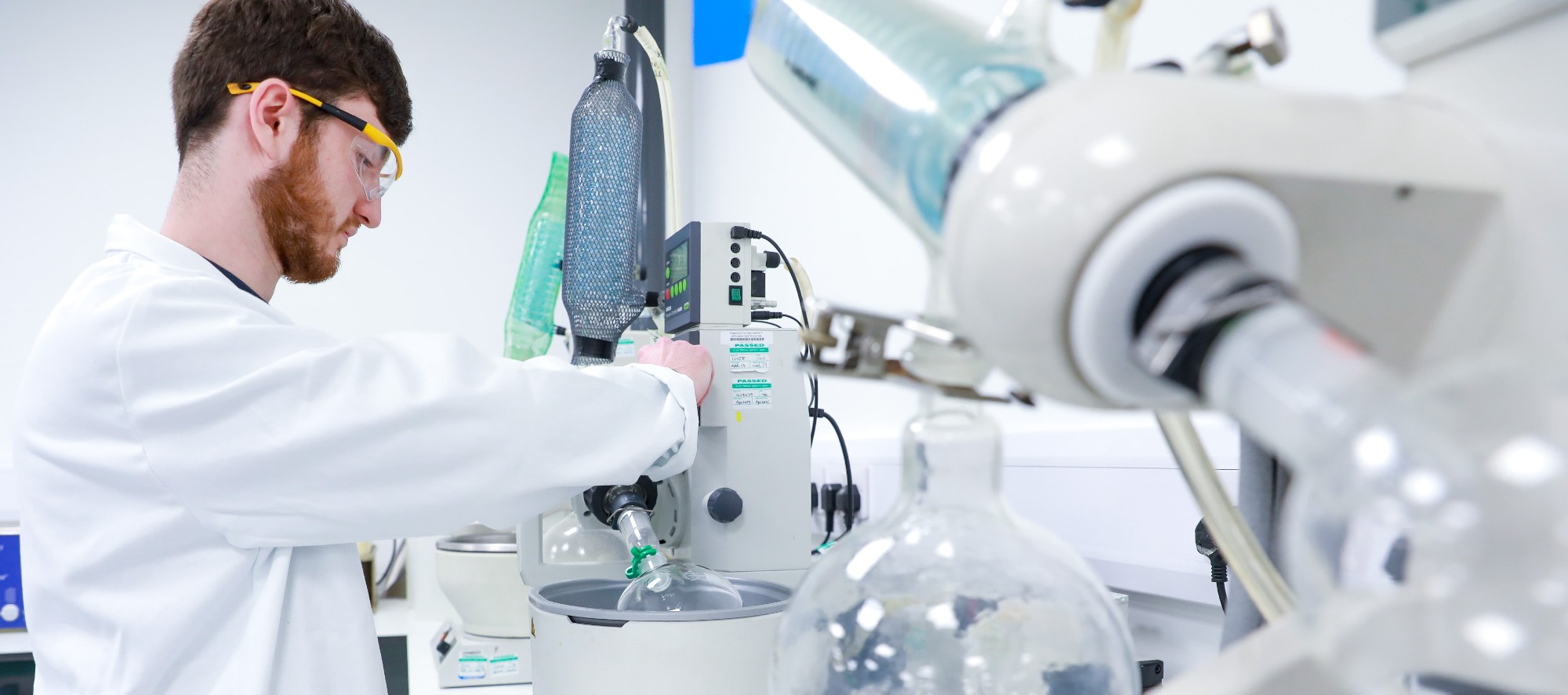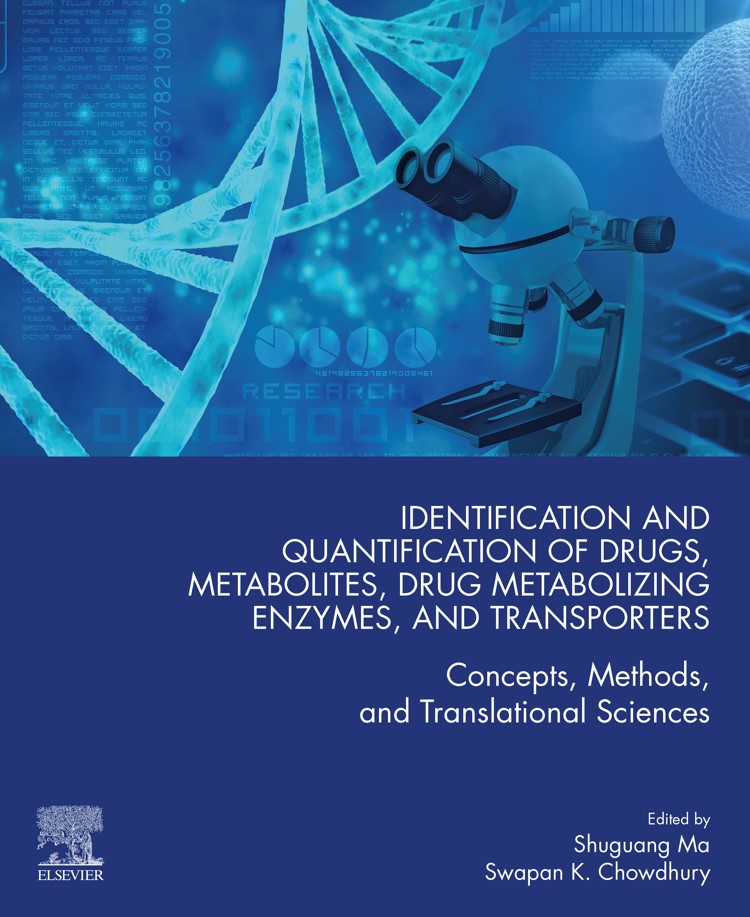What We Do
Certificates of Analysis
Certificates of Analysis
Purification projects typically aim to deliver target compounds at ≥95% purity as assessed by HPLC-UV-MS/ELSD (evaporative light scattering detection). The material can also be analysed by 1H NMR spectroscopy to confirm purity and structural identity.
Certificates of Analysis can be supplied incorporating use of quantitative NMR (qNMR) as a method for quantitation of content and purity.
If the target compounds are intended for use quantitatively as reference standards (such as quantitative bioanalysis or drug-drug interaction studies), Hypha would generally recommend additional physicochemical analyses to be performed to test for residual solvents, salt forms of the target compounds and residual inorganic impurities. The results would be summarised in the form of a higher-level Certificate of Analysis.
What We Do
Key features
These additional analyses are outsourced to specialist contract service providers and most often include:
High resolution mass spectrometric analysis (HR-MS) to confirm accurate mass and empirical formula
Thermogravimetric analysis-FTIR (TGA-FTIR) to measure the amount of residual solvents including water
Karl Fischer analysis to measure water content.
Quantitative NMR (qNMR) to determine organic purity
Elemental analysis to determine C, H and N content
In total these analyses require ca. 35 mg of material per compound. Further physicochemical analyses are available and a full list can be provided on request.
Resources
Explore our library of resources comprising brochures, case studies, posters and publications about the work we do.
Access to multiple metabolites needed to support clinical development is not always straightforward, and can sometimes mean that more than one technique needs to be applied to fulfil requirements. In one such project, a US pharma client required > 200 mg of three metabolites of a drug; an N-glucuronide (M1), an indirect O-glucuronide (M2b) and a hydroxylated metabolite (M8b). As part of this project, multiple components of Hypha’s one-stop metabolite shop were employed, including chemical synthesis, microbial biotransformation as well as purification and structure elucidation by NMR.
If clearance mechanisms of the test drug results in sufficient quantities of the major metabolites in biological material such as faeces or urine, purification and subsequent identification of metabolites from such matrices is possible. One such project undertaken at Hypha resulted in tens of milligrams of the R- and S-O-glucuronides of carisbamate, a neuromodulator developed by SK Life Science, which were purified to >95% purity from 150 ml of urine using a three-step purification method.
In Chapter 4 of the book on “Identification and quantification of drugs, metabolites, drug metabolizing enzymes and transporters”, Hypha authors summarise the different methods employed for producing metabolites of drugs, illustrated with representative examples from the literature and work undertaken at Hypha. The chapter also includes a discussion and examples of the use of NMR spectroscopy for structure elucidation of metabolites.
Find out about our related services

Hypha Discovery came highly recommended and we subsequently contracted with Hypha to extract and purify metabolites out of rabbit urine. As they were so successful with that extraction, we again requested help for a second program to extract metabolites from human urine and/or synthesize/biosynthesize 3 metabolites. As expected, Hypha has been successful preparing these metabolite reference standards along with structural elucidation and certificates of analysis.
Head of Toxicology/DMPK
US Pharma company
Ready to begin? Our scientists are available to talk through your requirements
Hypha Discovery is a UK-based CRO supporting pharmaceutical and agrochemical companies worldwide through the production of metabolites and new derivatives of drugs and agrochemicals in discovery and development.
Resources
Cookie Policy | Privacy Policy | Website Terms and Conditions
© Hypha Discovery 2021. All Rights Reserved. Website by Fifteen.co.uk


